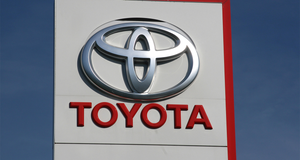INCINERATION: Incineration Alternatives Aim To Replace Flames
October 1, 1994
William D. Siuru Jr.
Incineration has yet to escape the flames of controversy.
For instance, if toxic materials are incompletely combusted in an incinerator, hazardous materials such as dioxins and furans can be emitted into the at-mosphere. Several techniques that require liquid electrolytes and hot plasmas to replace, or at least augment, the brute force disposal by thermal energy have been developed as an alternative to incineration.
Based on technology originally developed by the Lawrence Liver-more National Laboratories, EOSystems Inc. in Palo Alto, Calif., has developed a promising technique referred to as mediated electrochemical oxidation or MEO. MEO reportedly pumps liquid wastes through a closed loop system and destroys it in an acid electrolyte such as sulfuric acid. The waste materials are then broken down into water and carbon dioxide, which are safely vented or otherwise disposed. Upon completion, the electrolyte solution can be regenerated and reused.
MEO equipment resembles large electrochemical cells or batteries - the pumps that move the liquids through the cells are the system's only moving parts. A large electric power supply is required to provide current for a chemical reaction. Since the system is entirely en-closed, operators are not exposed to the hazardous material once it is loaded into the system, which operates at ambient pressures and temperatures of no more than 70 degrees Celsius. The system's benefits reportedly include significantly lower initial capital investment and operating costs.
MEO reportedly can be used to dispose miscible organics (phenols, ketones, alcohols); immiscible or-ganics (benzenes, kerosene, cutting oils); halocarbons (PCBs, TCE, vi-nyl chloride); mixed metals, salts and organics (used cutting oils); contaminated solids (wipes, rags, paper); biological and medical wastes; and radioactive mixed wastes (separation of radionuclides and destruction of organics). EO-Systems plans to have demonstration units ready within a year.
Several groups of researchers are working on hot-plasma techniques that, like incineration, are high-thermal treatment procedures but are reportedly more energy efficient.
Hot-plasma techniques are ap-propriate for disposing solid wastes including contaminated soils with hazardous and, often, radioactive metals and solvents. The plasma reportedly tears apart the solvents and vitrifies the soil, turning it into a rock material so that the metals cannot leach.
Hot plasma techniques are closer to practical application than all of the other electricity-based technologies. The MIT Plasma Center in Cambridge, Mass., houses the 30-kW Mark I and 1-MW Mark II plasma arc furnaces (see chart). The technique moves hazardous material through the 10,000 degree Celsius plasma arc that was developed by graph-ite electrodes to vitrify the soil. Bat-telle's Pacific North- west Laboratory in Richland, Wash., assisted in developing the technology for the plasma arc furnace.
Researchers at the Georgia Insti-tute of Technology in Atlanta are currently working on a plasma torch that will not require containment walls - an ideal method for in-situ disposal of materials such as asbestos. The torch also could be lowered into boreholes to vitrify hazardous soils or placed in contaminated water streams to convert the offending materials into rock to prevent them from migrating into the water table.
While the cost of high-tech alternatives to incineration may seem more costly, alternatives could be competitive if, for example, the in-cinerator is operating at full capacity or if it has been shut down for repairs from high temperatures and highly corrosive environments.
The amount of energy required is another factor to consider when evaluating costs. Plasma techniques, for example, reportedly re-quire less energy than incineration because the energy is supplied only to the contaminates. Incinerators, on the other hand, can supply en-ergy to the entire gas charge.
Conventional incineration and alternate technology can be combined for the final clean up of containments in the exhaust stream from the incinerator.
You May Also Like


